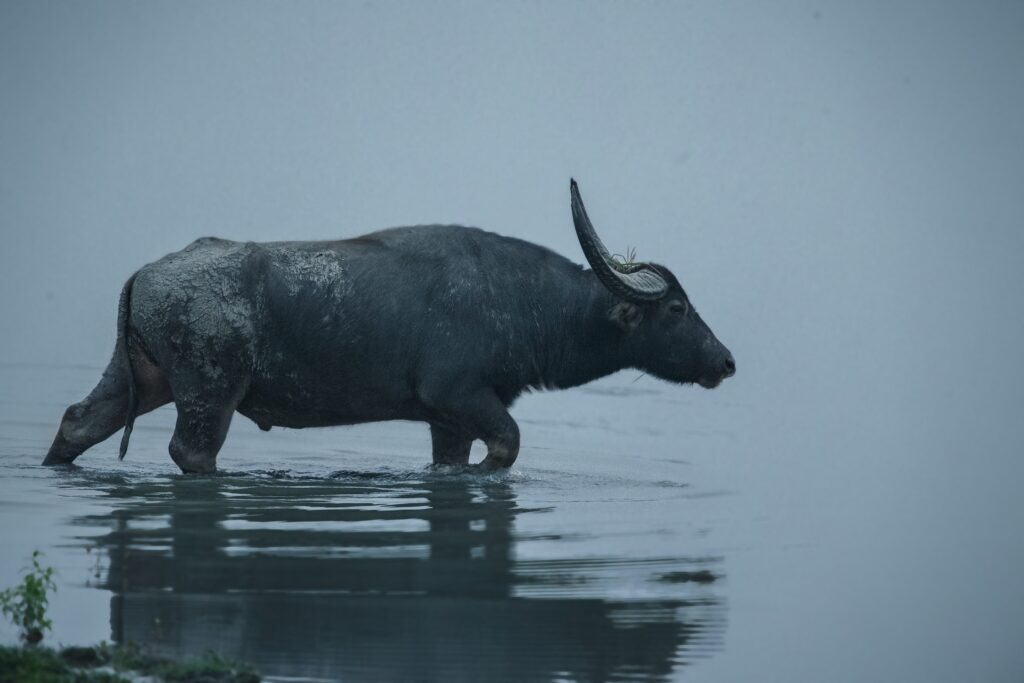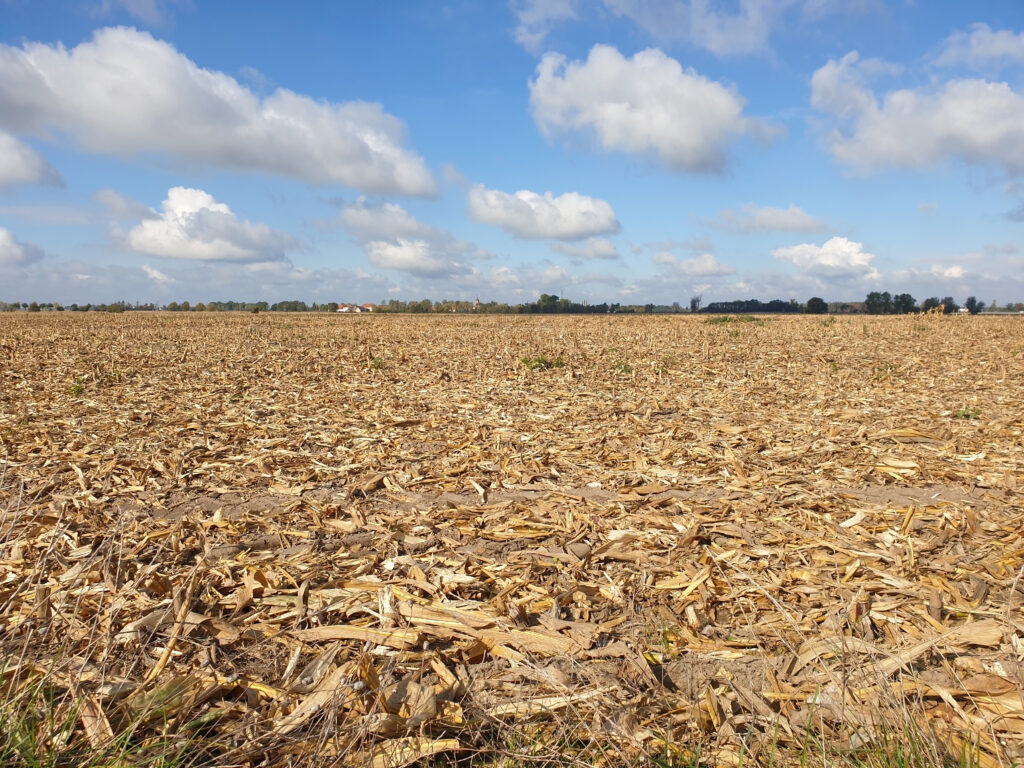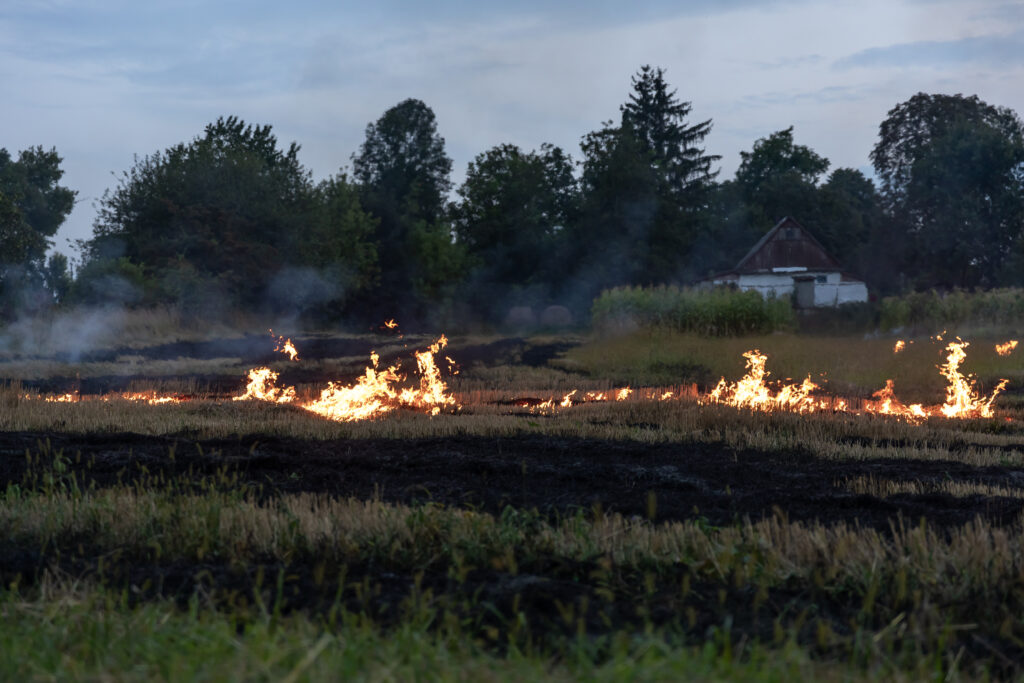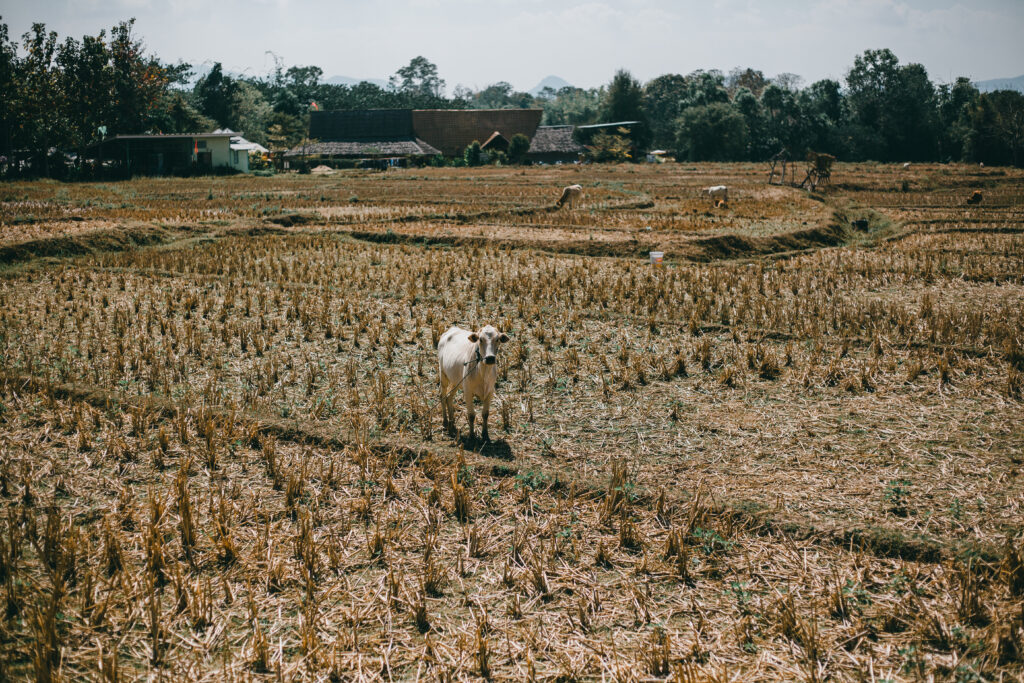
The Costs We Never Count
“New research shows conventional farming loses more than it earns—while circular systems could flip the equation.”
Rising temperatures significantly reduce the agricultural production value of Thai farm households. As an adaptation strategy, a study found that agricultural diversification can halve this vulnerability—reducing projected income losses from 31.6% to 19.3%
A new study in Kanchanaburi reveals the high hidden cost of Thai agriculture. When air pollution, environmental degradation, health damage are accounted for, rice and sugarcane farms are losing more than they make.
The study found that for every 100 baht of income from rice, there was 214 baht in environmental cost. In sugarcane, the imbalance was even sharper with 100 baht earned, 656 baht lost.
The study also simulated various farming scenarios. Business-as-usual (BAU) practices generated 5.31 billion baht in total damages per year in Kanchanaburi only.
Circular models showed a sharp contrast:
- Using residues as organic fertiliser slashed damages by 57%
- Turning residues into animal feed delivered net-negative costs, a 137% reduction from BAU
- Generating electricity from residues cut costs by 63%
These results show that circular agriculture isn’t just cleaner—it’s cheaper.
Yet despite these benefits, such solutions remain largely unsupported by current financing frameworks. The environmental costs remain externalised, and circular practices, remain unfunded.

Where the Green Doesn’t Grow
“Thailand’s climate money flows, but not where the soil needs it most.”
Thailand has pledged carbon neutrality by 2050 and net-zero emissions by 2065. Meeting those goals will cost nearly 5 trillion baht, with 4.5 trillion set aside for transport and 470 billion for energy.
Agriculture, however, has been left out of the picture in this mitigation budget.
Thailand’s agriculture sector contributes just 8.6% of GDP, yet it employs nearly 30% of the labour force, and is highly vulnerable to climate change, regularly battered by drought, floods, and saline intrusion.
Despite this exposure, climate finance for agriculture remains sparse and fragmented.
Between 2017 and 2022, Thailand’s Ministry of Agriculture implemented a climate-focused strategic plan worth only 1.15 billion baht. Around half of that went to adaptation projects strengthening farmers’ capacity to adapt to climate change.
But the gap remains huge between mitigation and adaptation budget. The entire five-year budget for agriculture is smaller than the mitigation subsidy allocated in a single year for electric vehicles with the government plans to inject over 360 billion baht to spur private investment in transport—100 billion before 2030.
Foreign Funds, But Only a Trickle
“International support helps, but it’s modest, scattered, and far from enough.”
With domestic climate finance largely bypassing agriculture, Thailand has increasingly relied on international support to fill the gap. But while external funds have helped, they remain modest, piecemeal, and poorly aligned with the sector’s full needs.
Between 2020 and 2022, Thailand received international support for 34 climate-related projects, totalling just over USD 83 million.
This support, delivered through bilateral donors, development banks, and the Green Climate Fund (GCF), has been valuable, helping to plug technical gaps and fund pilot schemes.
But it falls well short of the scale needed to transform Thai agriculture into a climate-resilient, low-emission system.
What’s missing is long-term, systems-level investment. Most of these funds are tied to short timelines, narrow deliverables, and single-commodity strategies.
Without structural changes in how agriculture is financed at home, foreign aid will remain a patch rather than a plan.

A Policy Blueprint: Turning Eligibility into Investment
“The new taxonomy includes agriculture. Now it needs to unlock capital.”
In 2025, Thailand’s Sustainable Finance Taxonomy Phase II finally opened the door to agriculture. The move was long overdue. It offers a structured way for climate finance to flow into farms.
The taxonomy now defines what counts as “green” in agriculture, covering from plant cultivation and livestock to aquaculture, from manure management to composting.
Farmers are not expected to quantify emissions, they simply need to adopt approved methods, such as alternate wetting and drying in rice paddies, or converting pig manure into biogas.
But eligibility doesn’t mean accessibility.
To align a project with the taxonomy, farmers can follow one of two routes:
- Prepare an Integrated Farm Management Plan (IFMP), showing legal compliance and commitment to at least two approved sustainable practices (one intermediate or advanced), or
- Obtain a recognised certification, such as Global GAP or IFOAM Organic. With this, both investment and revenue from the farm can be considered taxonomy-aligned for two years.
The model is clear, but the burden is high. Most smallholders in Thailand have never heard of an IFMP. Certification costs money.
If the taxonomy is to become a tool, not just a document, it will need serious investment in technical assistance including training and support. Government agencies must break down the framework into usable and easy-to-understand guides.
Lenders must develop green credit tools. And farmers must be equipped with the resources, not just the responsibility, to make the transition.
Without that support, the taxonomy risks sitting on shelves while Thai agriculture continues business as usual.

No Climate Credibility Without Crops
“Thailand’s green transition can’t afford to leave agriculture behind.”
The data is clear. Thai agriculture is absorbing the environmental costs of a system that rewards extraction over regeneration—burning crop waste, leaching soils, and sending the bill to ecosystems and public health.
Circular alternatives exist. They’re cleaner, cheaper, and already proven. But they remain locked out of finance.
Government funding favours highways over harvests. International aid helps, but it was never meant to carry the whole sector. And while the new taxonomy gives agriculture a formal seat at the climate finance table, most farmers still can’t afford the menu.
If Thailand wants to hit its climate targets and protect its food systems in the same breath, it needs to fund the fields.
That means recognising circular agriculture not only as a sustainability issue, but as a financial opportunity. It means moving capital to where the solutions already are.
And to do that we need to build trust in the system by making climate finance more transparent, traceable, and accountable. Better data, clearer tracking, and open reporting can help increase both credibility and investment.
Without knowing where the money goes, we can’t say it’s going where it matters.
